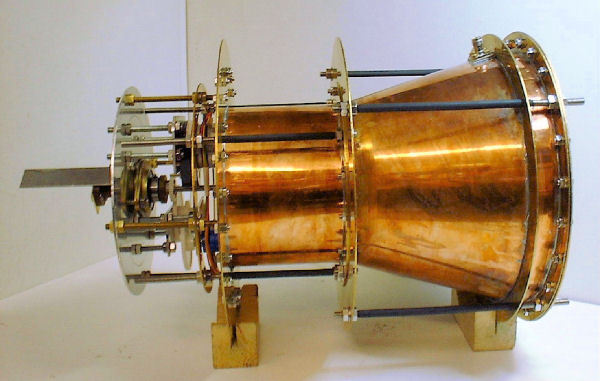 Chinese researchers confirmed the theory that they are building an “impossible” space drive, and at this stage they are building a demonstration version; if things go according to their plans, this could revolutionize space exploration and the economy of satellites, giving China a significant military and economical advantage over other countries.
Chinese researchers confirmed the theory that they are building an “impossible” space drive, and at this stage they are building a demonstration version; if things go according to their plans, this could revolutionize space exploration and the economy of satellites, giving China a significant military and economical advantage over other countries.
This year, “Emdrive” (short for “electromagnetic drive”) has stirred many spirits, after it was developed as a concept by a UK based company. What’s so special about it is the fact that it converted electrical energy directly into thrust using microwaves without using any propellant in the process, and without violating any law of physics. It was received with a wave of criticism, with many scientists claiming it’s impossible.
“It is well known that Roger Shawyer’s ‘electromagnetic relativity drive’ violates the law of conservation of momentum, making it simply the latest in a long line of ‘perpetuum mobiles’ that have been proposed and disproved for centuries,” wrote John Costella, an Australian physicist. “His analysis is rubbish and his ‘drive’ impossible.”
Still, the man didn’t give up, and after the British canceled the funding, the Chinese got in and it seems that the work and money paid off. His company, Northwestern Polytechnical University (NPU) worked a deal with Xi’an.
“NPU started their research program in June 2007, under the supervision of Professor Yang Juan. They have independently developed a mathematical simulation which shows unequivocally that a net force can be produced from a simple resonant tapered cavity,” Shawyer tells Danger Room. “The thrust levels predicted by this simulation are similar to those resulting from the SPR design software, and the SPR test results.”
The advantages of this kind of thrust would be huge, allowing satellites to move around at will even after the fuel runs out. The probes sent into outer space could move faster and go further, and if their calculations are right, it could take a manned mission to Mars in 41 days. Still, many fear the fact that China will use this huge advantage not in scientific purposes, but in military.






